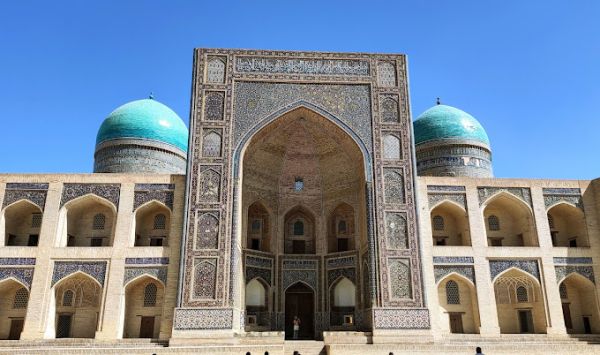Kalyan Mosque
The religious building has existed for over 500 years and has always been called the main Bukhara mosque. This is a cathedral or Friday mosque (juma), that is, a collective prayer of Muslim believers takes place here at noon on Friday, when a common prayer is performed. The building of the Kalyan Mosque is very spacious and can accommodate up to 12,000 people who came to the festive service at a time.
The mosque is included in the UNESCO World Heritage List. Many tourists recommend visiting the square in front of the mosque in the evening and looking at it in the rays of the setting sun, besides, there will be very few travelers at this time and it will be possible to take good photos. A tree grows in the center of the courtyard, which looks especially beautiful in autumn.
The mosque measures 130 by 80 meters. The area is 1 hectare.
History and architecture of the mosque
One of the central religious sites of the city was built in 1514, during the reign of Ubaidullah Khan of the Sheibanid dynasty. It was in the XVI century that Bukhara became the capital of the state, and many significant and grandiose structures were built here. The Kalyan Mosque was built on the site where the main mosque of Bukhara used to stand, erected by the Karakhanid dynasty in the 12th century and destroyed during the conquest of the city by Genghis Khan. Fragments of the lower part of the walls with figured brickwork have been preserved from this first mosque. There are opinions that until the 12th century the main mosque of the city was located on another street, and was moved here during the reconstruction of the center of Bukhara.
The Kalyan Mosque is the second largest not only in Uzbekistan, but also in the whole of Central Asia. The championship is behind the Bibi Khanim Mosque in Samarkand. It is no coincidence that the name of the Kalyan mosque translates as "Big Mosque".
The dome of the mosque towers over other buildings of the city and thus emphasizes the importance of the main mosque. However, the simplicity and clarity of the architectural forms counterbalance this impression.
The architecture of the religious building is traditional for the Timurid era. It is a rectangle with four iwans. The mosque has 7 entrances, the main of which is located on the east side, this entrance group is decorated with a mosaic portal and Arabic script. There are steps leading to the courtyard. A large blue double dome rises above the central hall, which has the shape of a cross. The outer dome is mounted on a mosaic drum. There are blue domes on both sides of the main building. There is a mihrab in the western wall, indicating the direction of Mecca, and it is also decorated with mosaics.
The Kalyan mosque belongs to the open type — worshippers were placed on an open indoor area and in covered galleries. The burial of one of the first imams of the Kalyan mosque has been preserved in the courtyard. At the beginning of the 20th century, a pavilion with 8 sides was built over the burial site, serving as the mosque's pulpit. Thanks to the good acoustic organization of the room, thousands of parishioners could hear the prayers that were read from the pulpit.
Magnificent arched-domed galleries are located on the courtyard territory. In hot weather, it is especially pleasant to walk there, as it is very cool in the galleries. All of them are crowned with a total of 288 domes based on 208 pillars.
The materials used in the construction are burnt brick, stone, wood. The brick facades are covered with bright mosaics, glazes of white, blue and light blue colors, as well as Arabic script. The name of the mosque's builder, Bayezid al Purani, was found in the facade ornament. Inside the mosque, the walls are decorated with ornaments and golden sayings from the Koran.
At the end of the 20th century, the Kalyan Mosque was restored and is now operational. During Friday prayers, tourists are not allowed inside, on other days the entrance is closed after 20:00 hours, when prayer begins.
A two-tiered religious school, the Miri Arab Madrasah, has been erected opposite the Kalyan Mosque, and the Kalyan minaret is located next to them. All three buildings are part of the Poi-Kalyan complex, the central architectural ensemble of the city. This arrangement of two large buildings opposite each other on the same axis is a characteristic principle of Bukhara architecture.





















